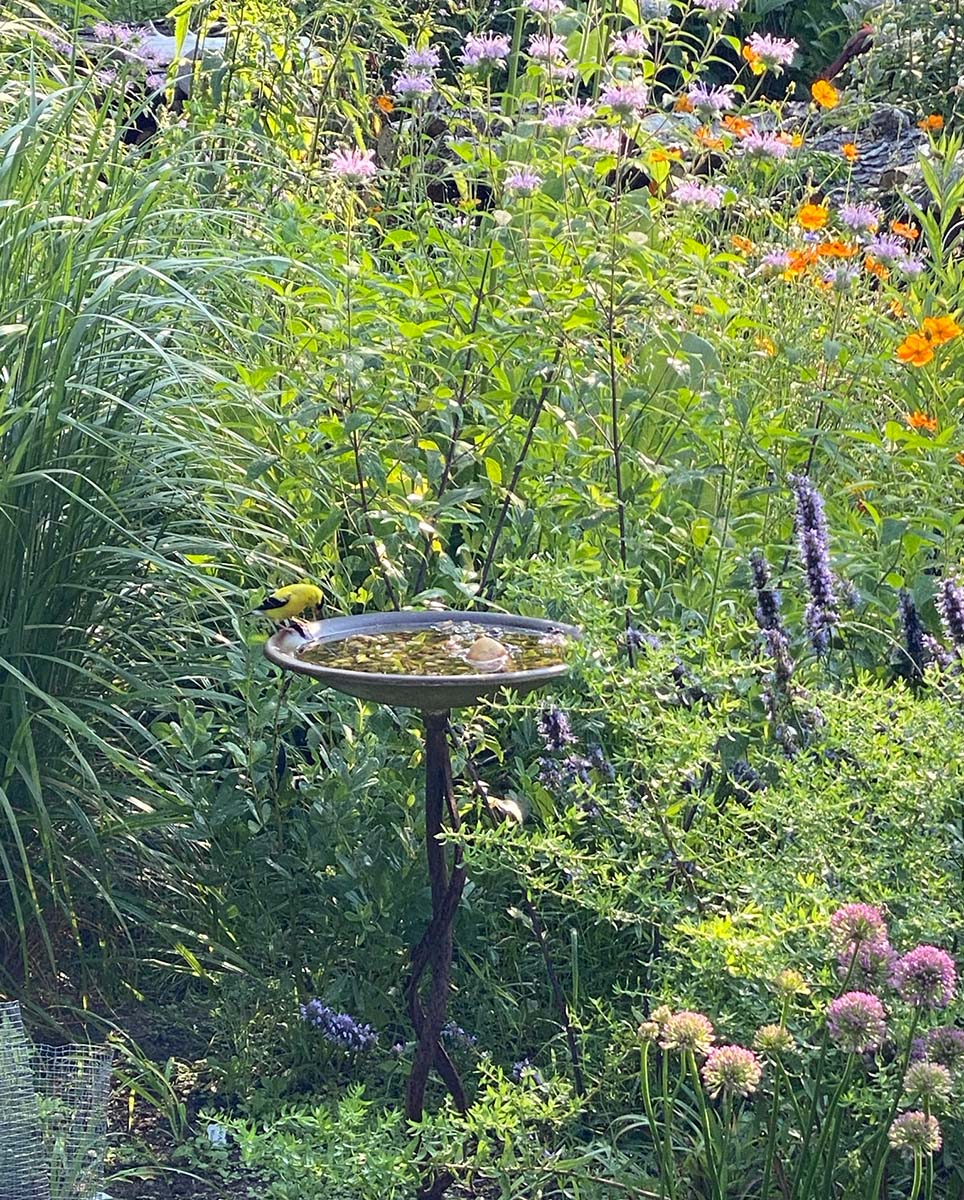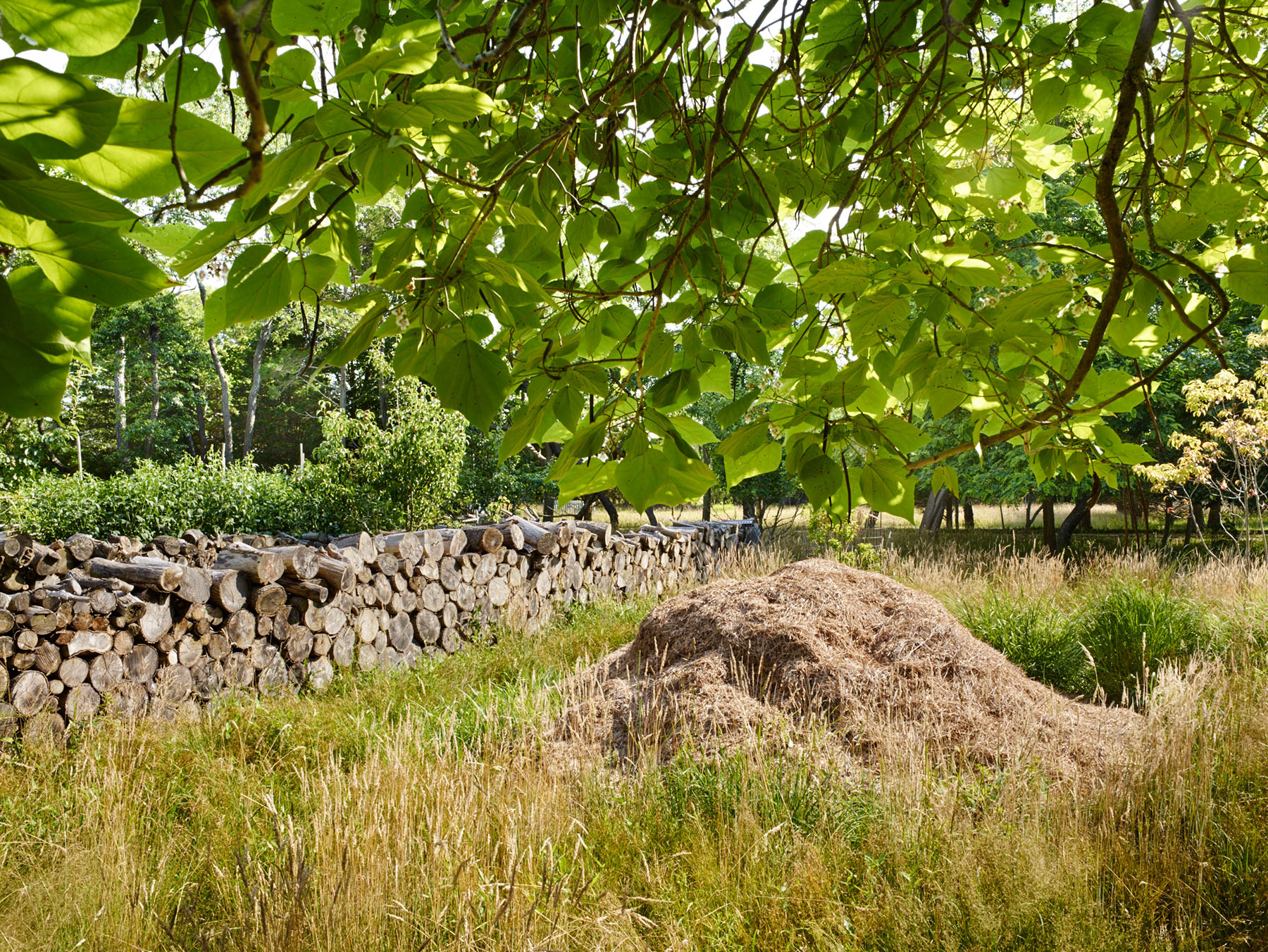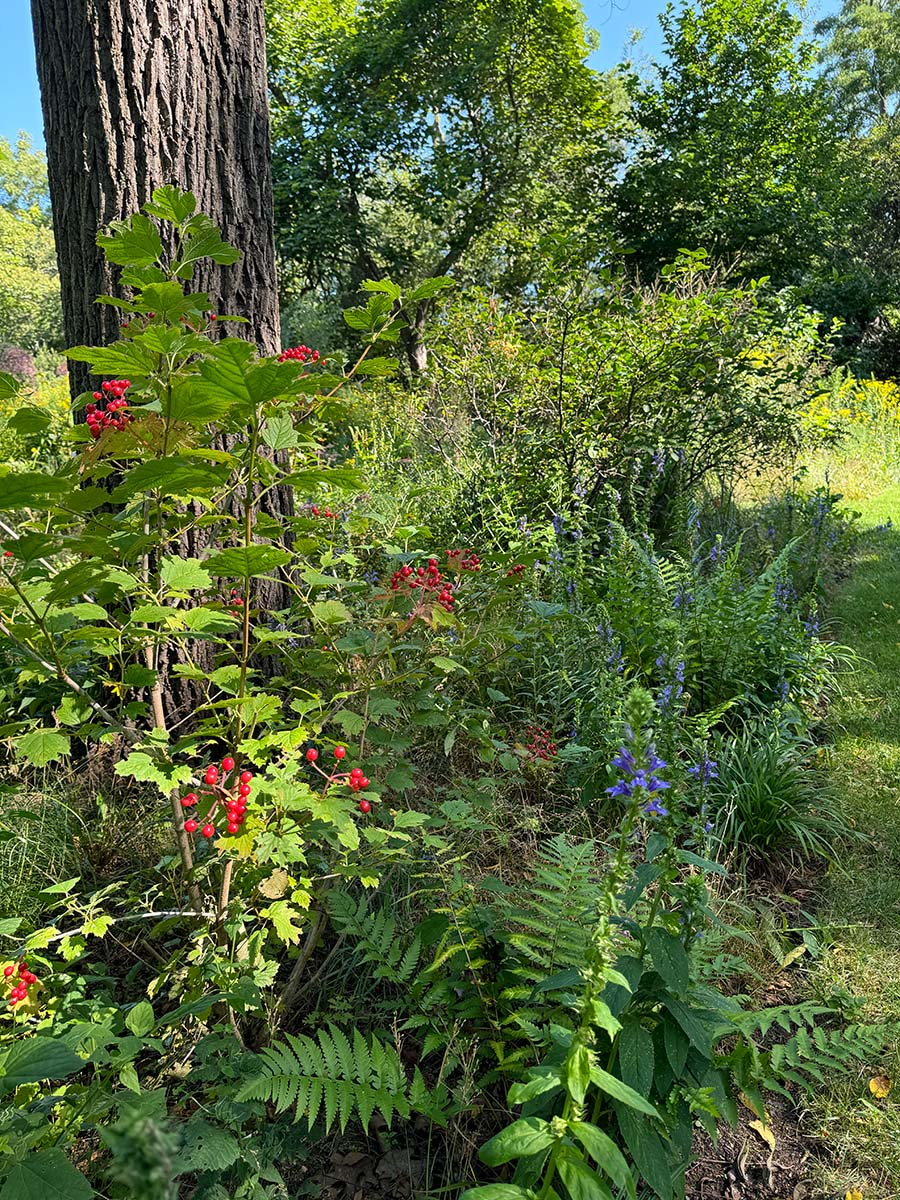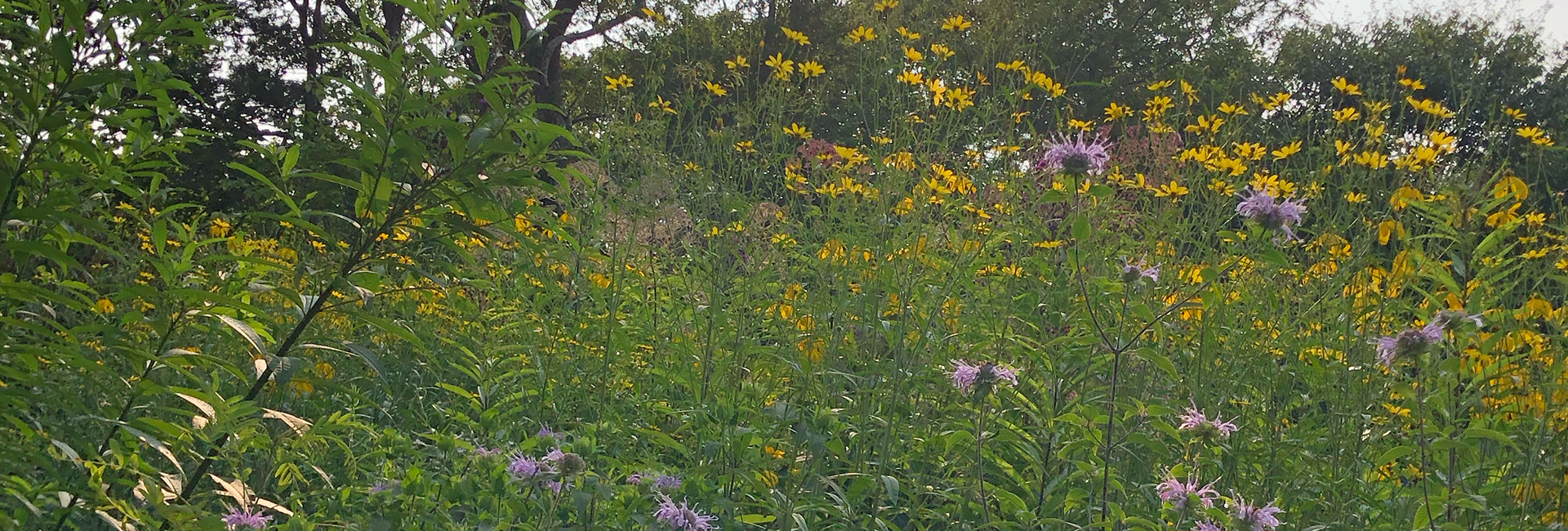Marshouse: A PRFCT Place
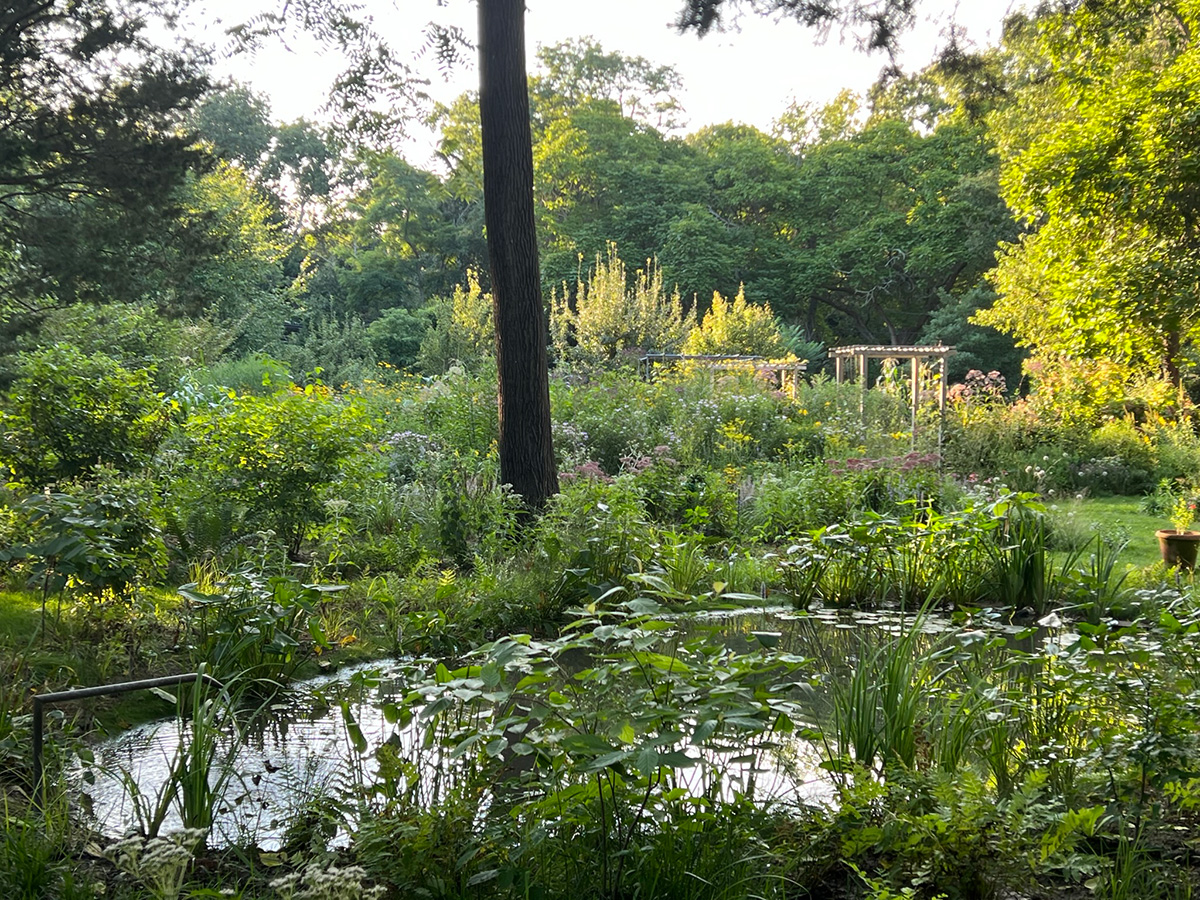
WHEN I FIRST CAME TO THIS PROPERTY, it was completely covered with invasive plants. I started by cutting everything back. I made a commitment that no biomass would leave and had to figure out what to do with everything I cut back. Dead trees became log walls. Branches, sticks, and twigs became woodchip paths. Vines, which I bundled up and placed around the edges so as not to remove all wildlife habitat, became homes for thrushes, rabbits, and wrens. Once the property was reasonably cleared, I started planting. The entire property is a constant experiment in how I can maximize biodiversity by focusing on food for non-human lifeforms. The only part of the property specifically for human consumption is the vegetable garden. I like to look at a property this way: What is for me and what is for everything else? If wildlife can’t eat the everything else, what will they eat?
The entire property is divided into two main areas: deer in and deer out. The deer fenced area is intended to support my gardening habit, but also to show people the native flowering plants we are losing to an overabundance of deer. The non-fenced area shows what you can do with deer and what they do not eat.
I call this a PRFCT property, meaning it follows our Principles of PRFCT: Minimize harm and maximize biodiversity. No chemicals are used on this property, and we operate as a closed loop, meaning no inputs aside from new plants and no outputs. All the biomass that the land produces stays here and returns to the earth. Most of the plants on the property are native, but not all. My goal is 2 of every 3 new plants are native to support wildlife populations; Or, what I call, “²/₃ for the Birds.”
—Edwina von Gal
Download the self-guided tour map.
And follow Perfect Earth’s Global Ground Rules and say yes to minimizing harm and maximizing biodiversity—and joy!
